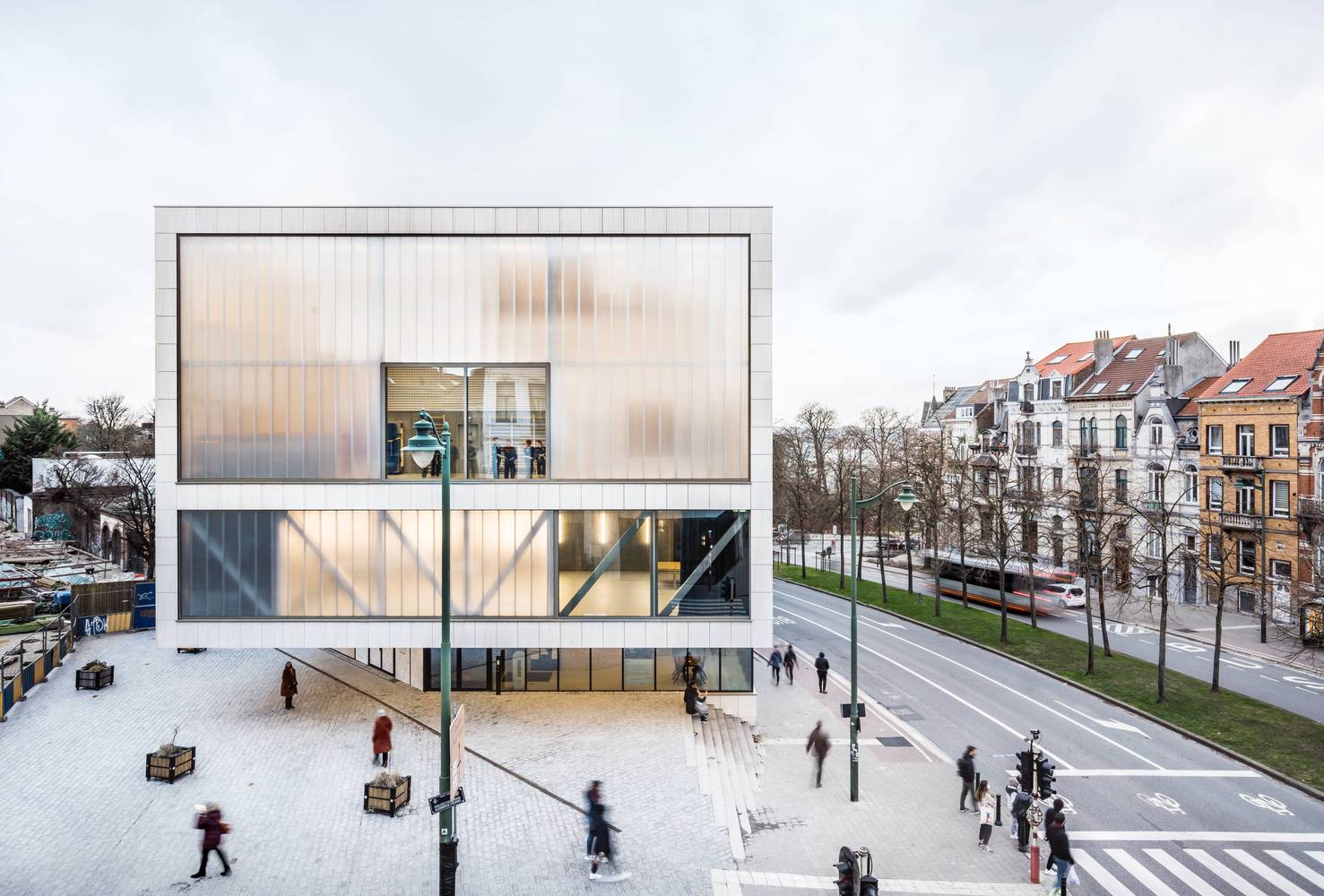Amongst all modes of public transport, the train may be the most unique of them all. This is thanks to the relationship between travel, space and time. The special nature of railways extends to the frenzied rhythm of its hustle and bustle, giving passengers a chance to while the time away. They provide a space where time slows down and brings out stories and emotions. Trains are where we lose and find ourselves again.
If we look at railways in the context of their surrounding architecture, stations are the beating heart. This is reminiscent of what Marc Augé termed non-places. These travel hubs take on an inherent shared and collective identity. Throughout history, stations have moved goods and people. They are significant places of revolutionary turning points in their particular architectural style, developing and incorporating new materials like wrought iron.
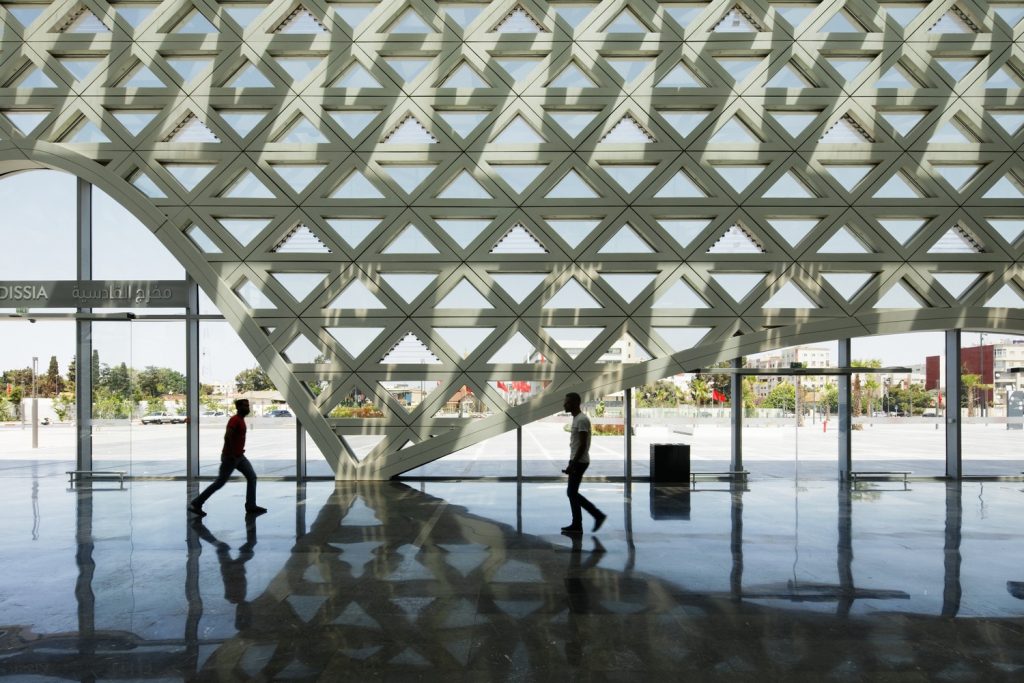 Here at The Decorative Surfaces we take a look at some of the most impressive modern stations in the world. They are some of the most beautiful buildings known to humanity. But despite this, their utterly modern roots as non-places invite us to reflect on changing features that adapt to current needs, in line with Bauman’s concept of liquid life.
Here at The Decorative Surfaces we take a look at some of the most impressive modern stations in the world. They are some of the most beautiful buildings known to humanity. But despite this, their utterly modern roots as non-places invite us to reflect on changing features that adapt to current needs, in line with Bauman’s concept of liquid life.
Railways stations: where it all starts and finishes
Stations have taken on an importance that surpasses their technical functions, both socially and aesthetically. They are places where trains journeys start and end, and represent a contemporary architectural challenge.
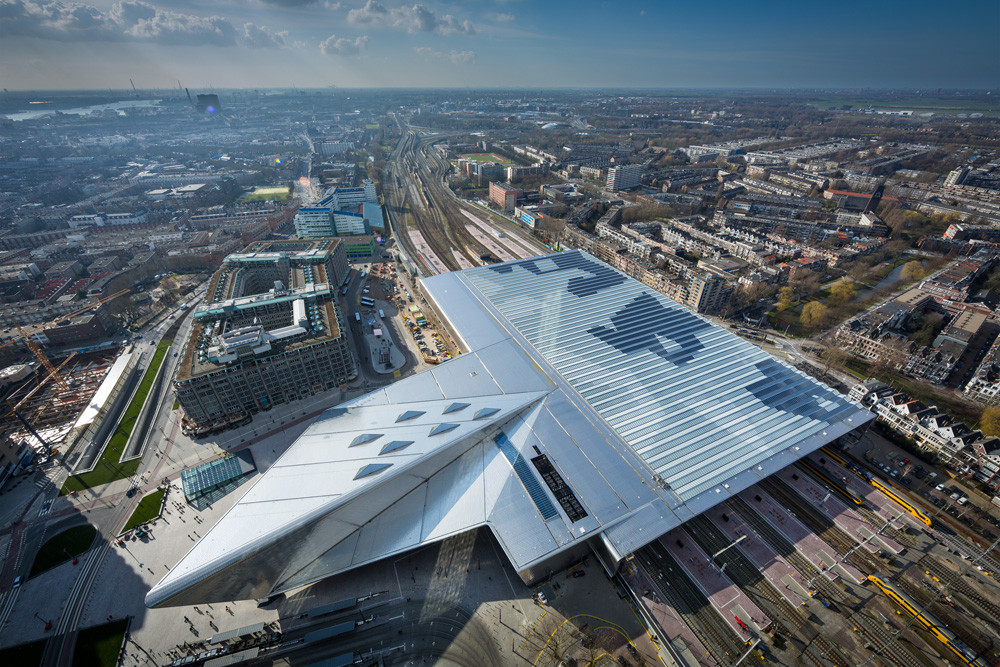
Rotterdam Central Station / West 8 + Benthem Crouwel Architects + MVSA Architects, 12th March 2015. Plataforma Arquitectura.
The familiar grand domed metal or iron structures have developed where their nowadays holds an important place for cities. Leaving the industrial revolution behind in its smoke has given way to present-day sophistication and experimentation in architectural design. They have acquired an identity of their own, a self-renewing one that accommodates the comings-and-goings of life.
Just as railway stations in the 20th century represented a prediction of the future, modern-day examples take up the same mantle. They do so by adapting new materials and structures to new types of railways. A method of transport that is continually moving forwards. Given the history of this type of structure, many modern stations are, in reality, remodelled and/or adapted from original buildings.
Creating urban texture in Rotterdam
Rotterdam is home to an undoubtedly grand example of railway architecture. This revamped station looks to the future of this Dutch port city. A European beacon, as reflected through the appearance of different entrances facing the city’s varied neighbourhoods.
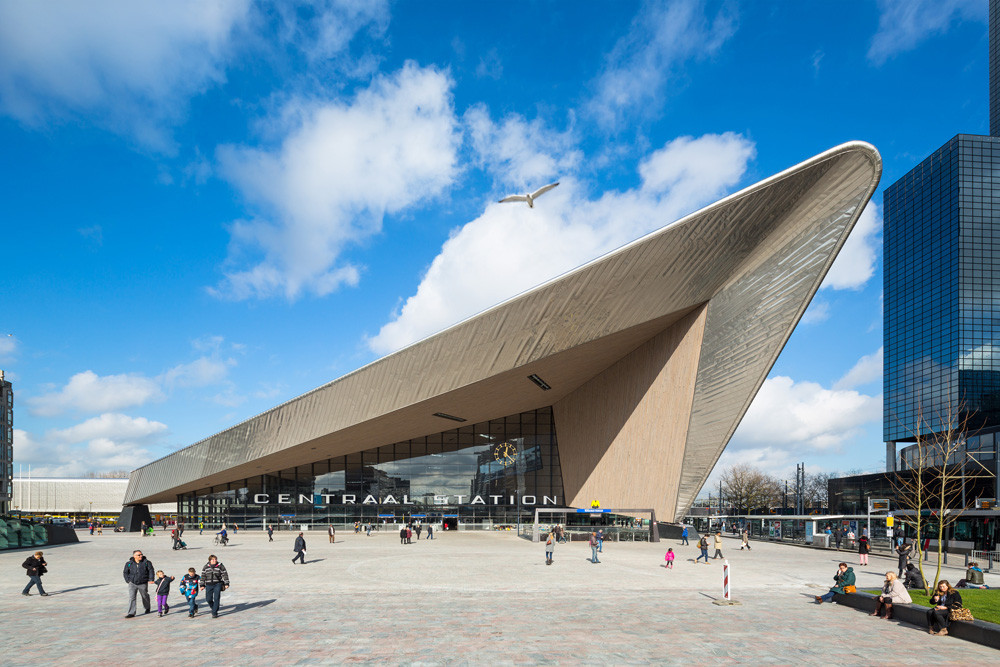
Rotterdam Central Station / West 8 + Benthem Crouwel Architects + MVSA Architects, 12th March 2015. Plataforma Arquitectura.
Rotterdam Centraal Station (Netherlands) opened in 2008 and was designed by Benthem Crouwel Architects and MVSA Architects. The structure at once provides order to the surrounding space whilst ensuring it shines. With its large stainless steel roof and main glass and wood façade, they both create natural visual movement towards the city centre, making it the main focus.
The architectural structure creates a sense of balance by providing a sublime urban texture connecting to the railway lines without losing sight of human scale. It is, without a shadow of a doubt, an authentic adaptation to modernity that blends and adapts to lend the city with an international identity.
A future safe haven in Morocco
In terms of architecture looking towards the future, we could not fail to mention the Kenitra Train Station in Morocco. A sparkling jewel of a project imagined to provide a renewed sense of self to traditional urban contexts in Morocco. The design was an international collaboration between Silvio d’Ascia Architecture (France) and Omar Kobbité Architectes (Morocco). Opened in 2019, the project won the World Architecture and Design Award the same year.
The project itself is much more than just a railway station. It represents a commitment to public space, everyday life in the city and a poetic extension of Moroccan architecture by reinterpreting the traditional mashrabiya.
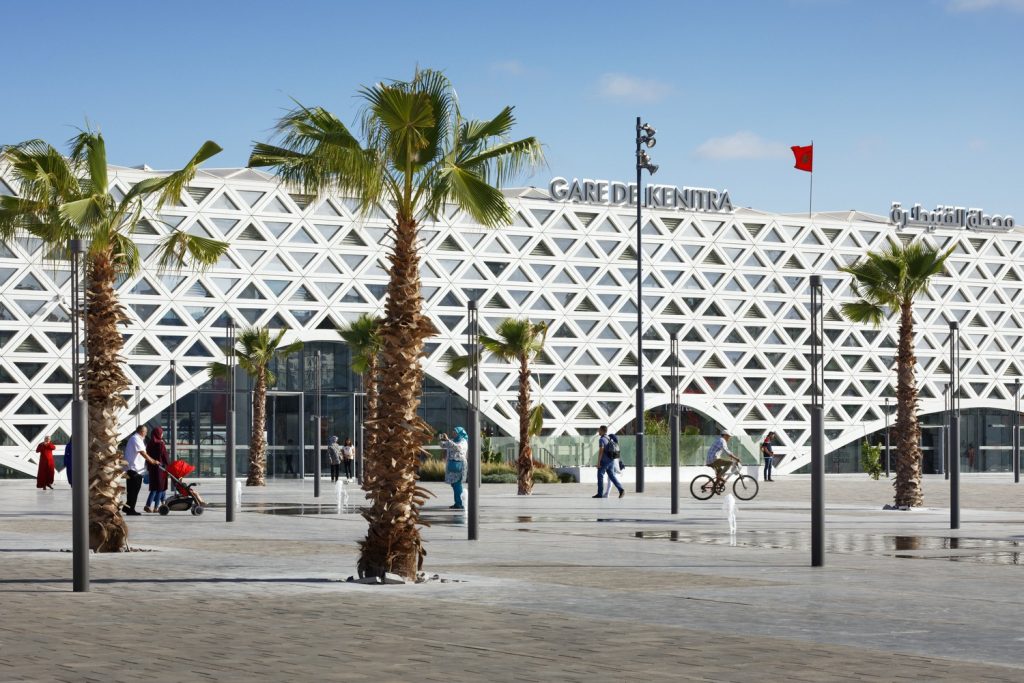
Kenitra Train Station / Silvio d’Ascia Architecture + Omar Kobbité Architectes, 20th May 2020. Plataforma Arquitectura.
Just like the previous project, the structure’s two façades expectantly look towards, facing different neighbourhoods, balancing the landscape and urban fabric. Nevertheless, our attention is truly drawn to the outstanding main façade, comprising over 800 fibre-reinforced, high-performance concrete blocks.
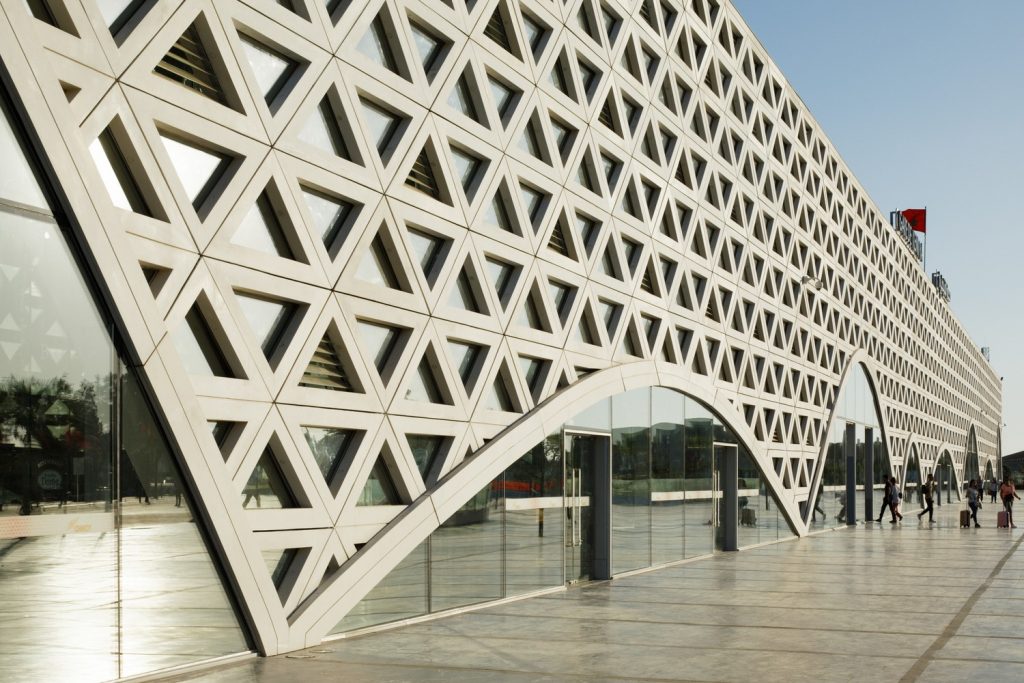
Kenitra Train Station / Silvio d’Ascia Architecture + Omar Kobbité Architectes, 20th May 2020. Plataforma Arquitectura.
The building’s front takes poetic inspiration from traditional geometric patterns in Islamic architecture through its imposing arches. In this modern take, the building represents a perfect balance of light, shadow and transparencies, creating a halo of security for the future.
Future-thinking from Zaha Hadid
One project that cannot be overlooked is Zaha Hadid’s futurist design at the new Afragola Station in Naples. The expanse aims for a type of urban decongestion with increased train use that connects, embraces and accompanies local residents.
Imagined as a type of public bridge, the imposing project is a meeting point for trains to Italy’s urban centres. A walkway sits over eight railway lines and is transformed into the main concourse for passengers and public. The solid geometry of the concourse welcomes visitors through entrances at either end.
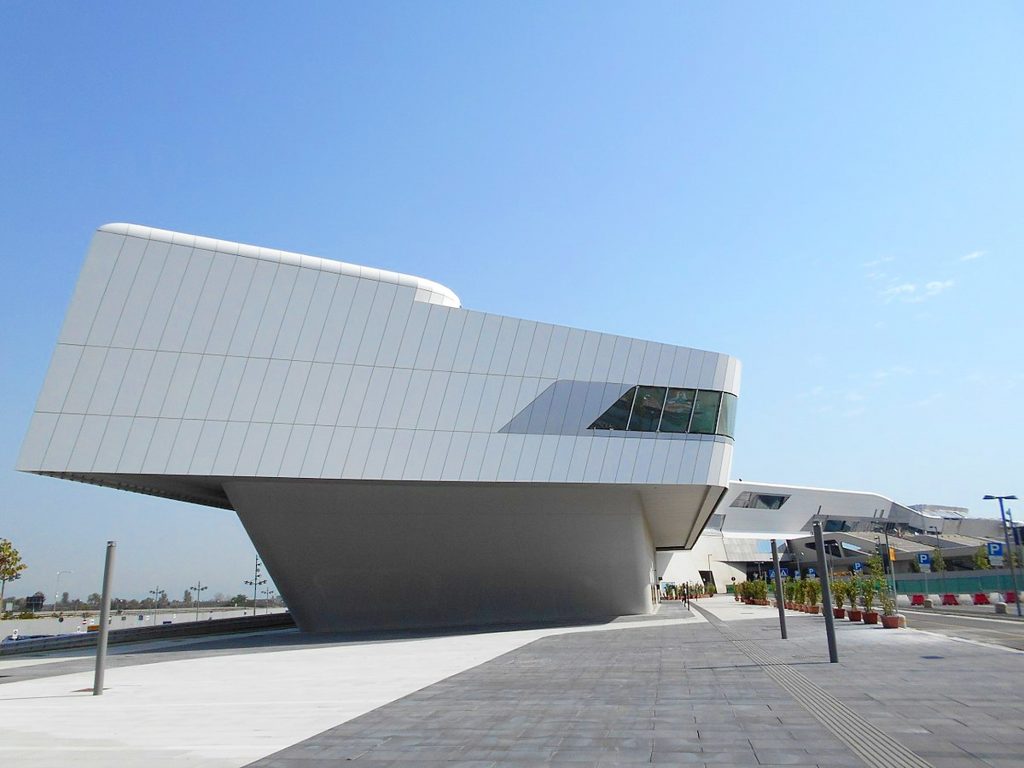
Picture © Credits to Wikimedia/Pivari.com
The façade is framed by steel ribs with curved concrete structures using the latest technology to offer optimum performance.
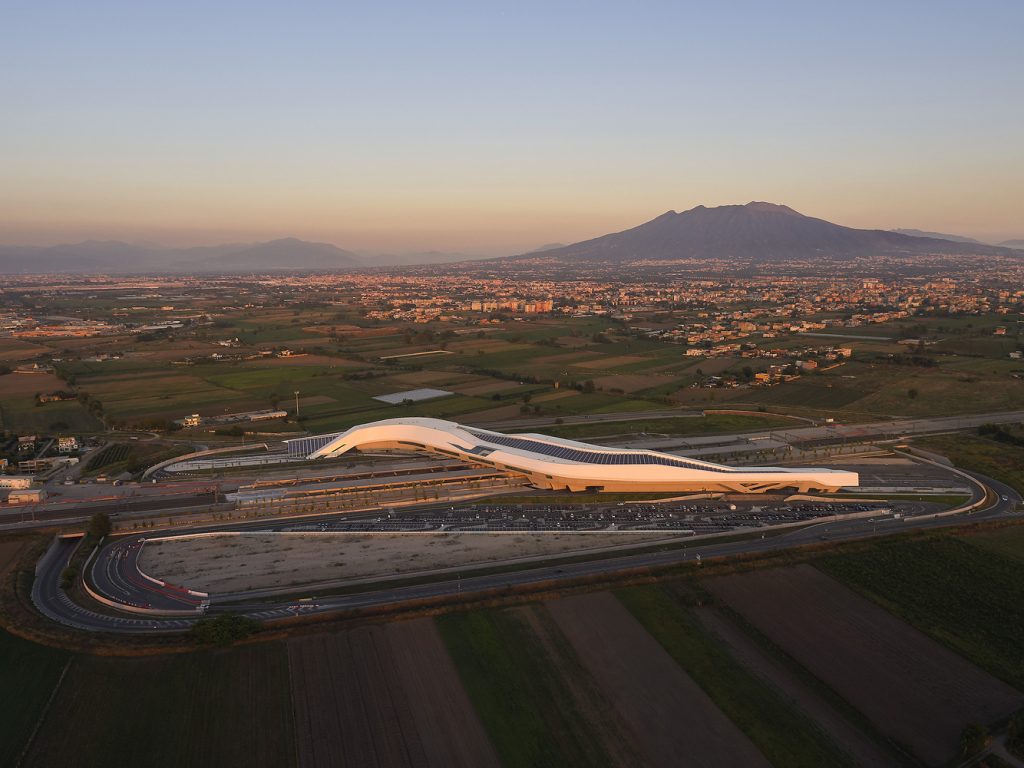
Napoli Afragola Station / Zaha Hadid Architects, 29th August 2018. Plataforma Arquitectura.
These architectural approaches combine functionality, technology and art. They help us perceive the soul of railway structures. Whilst being buildings form part of people’s everyday lives, they are also crucial constructions for urban planning and design.

